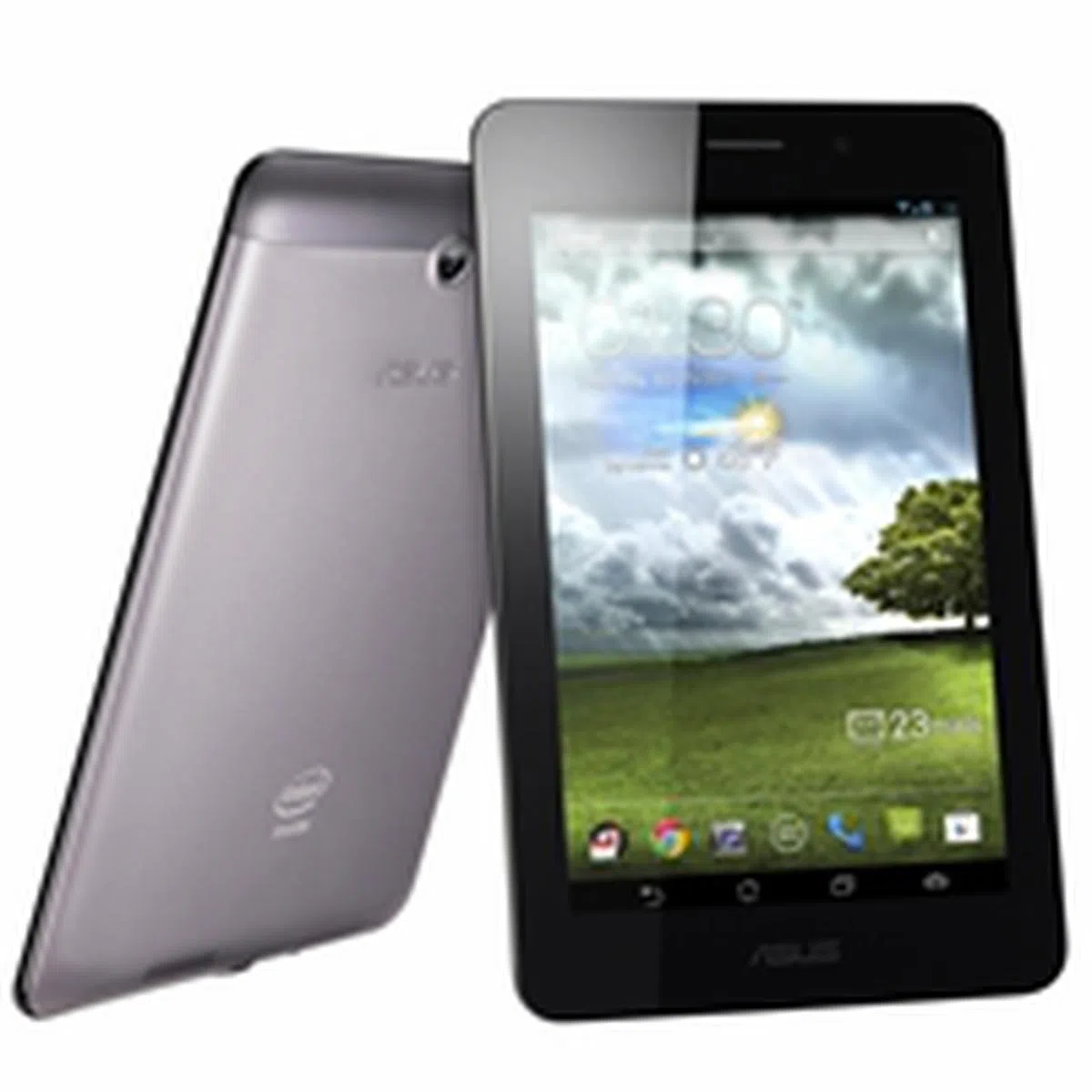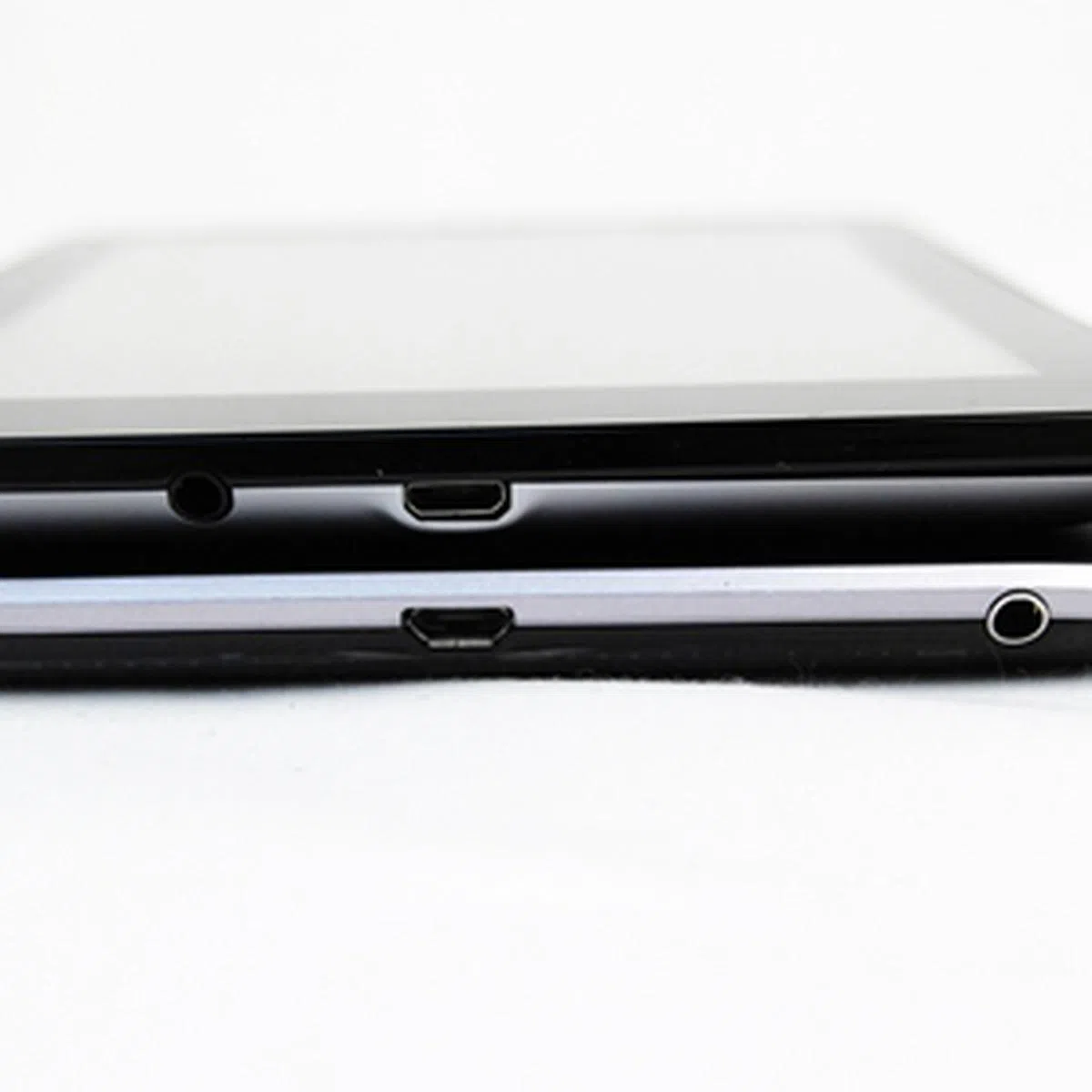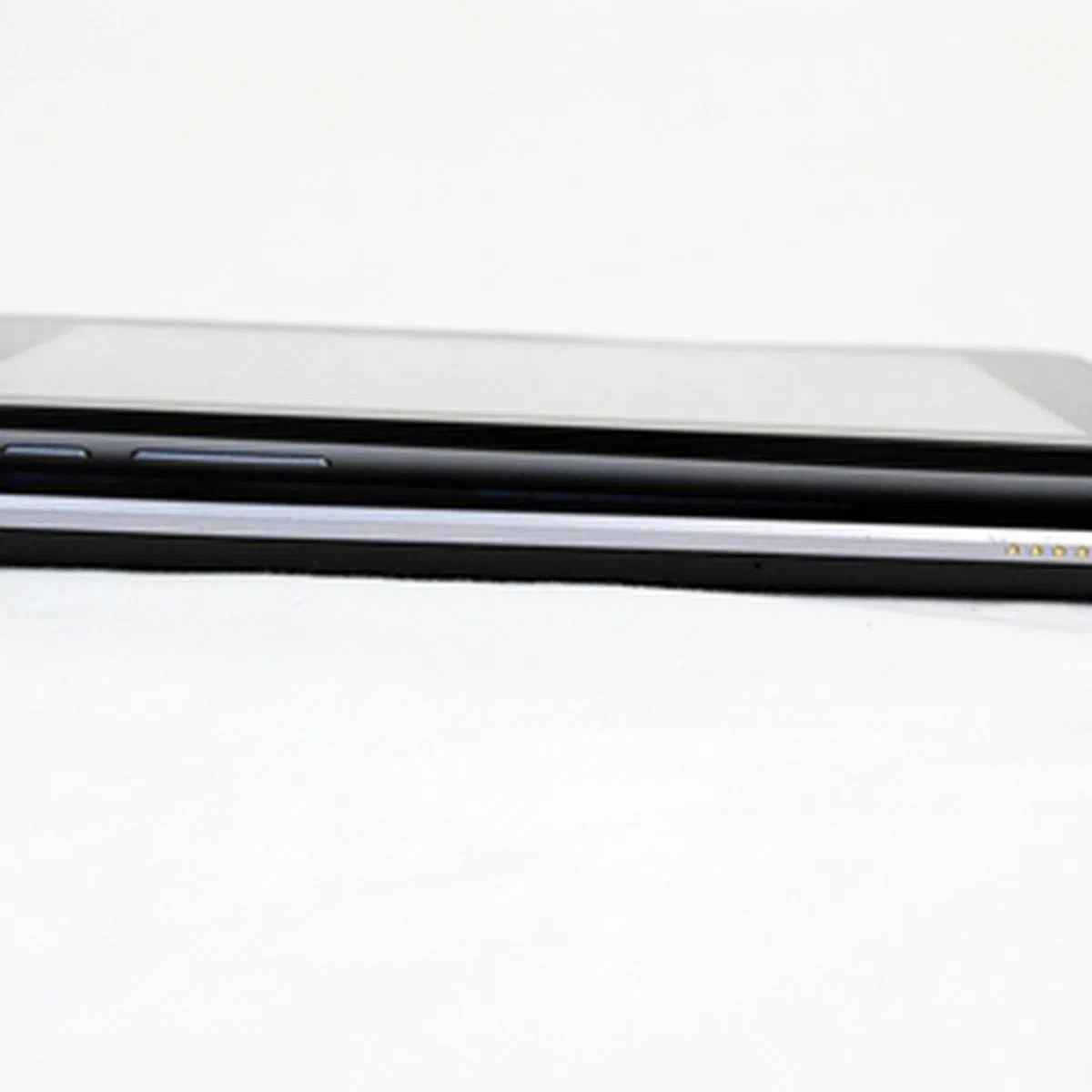ASUS Fonepad - World's First Intel Lexington Tablet
The Fonepad is ASUS's first foray in making a tablet with 3G phone functions. How different is the ASUS Fonepad from the crop of Samsung Galaxy Tabs that have similar functions? More importantly, can ASUS succeed in this tablet segment? Hit the link to find out more.
By HardwareZone Team -
Overview
ASUS had a strong showing at this year's Mobile World Congress where it unveiled not one, but two mobile devices targeting the extreme ends of the consumer markets. The first device is the ASUS PadFone Infinity, which will go up against the likes of the HTC One, Samsung Galaxy S4 and Sony Xperia Z.
The second device is the ASUS Fonepad, a tablet with full 3G phone functions. Tablets with voice call capability have been in the market for some time, thanks to Samsung which started the ball rolling with the 7-inch Galaxy Tab in 2010. Huawei also recently joined in the race with the MediaPad 7 Lite. Does the increasingly cramped tablet market have any more space for the ASUS Fonepad? Let's find out in this review. Before you do, here's a quick look at the specs of the ASUS Fonepad:
 | Key highlights of theASUSFonepad
|
Design

The ASUS Fonepad (left) shares almost the same physical dimensions as the Google Nexus 7 (right).
ASUS has been making pretty good hardware and the Fonepad is no exception. Clad in an anodized aluminum shell, the Fonepad certainly feels more premium compared to the plasticky Samsung Galaxy Tab 2 (7.0) and Galaxy Tab 7.0 Plus. Unlike plastic, there is no give or flex to the bodywork of the Fonepad.
Considering its proposition as an entry-level device and the amount you are forking out for, the Fonepad is absolutely a better deal. It is even more impressive if you take into account that the Fonepad is lighter than its competitors:
- ASUS Fonepad: 340g
- Huawei MediaPad 7 Lite: 370g
- Samsung Galaxy Tab 2 (7.0): 344g
- Samsung Galaxy Tab 7.0 Plus: 345g
The immediate comparison to the Fonepad is without a doubt the Google Nexus 7, which is also manufactured by ASUS. While the Nexus 7's rubberized back gives a nice textured feel and offers good grip of the device in your hands, we prefer the smooth aluminum finish on the Fonepad. There are only minimal differences in terms of dimensions between the two devices, which are hardly noticeable (e.g. the Nexus 7 is thicker by 0.05mm).

 |  |
As the Fonepad doubles as a phone, it comes with two microphones - one at the top to analyze ambient noise, and one at the bottom to record voice and ambient noise. The microphones are deliberately placed further apart to provide more accurate ambient noise reduction by software algorithms. You will find the standard suite of connectivity ports and options on the Fonepad, which include a 3.5mm audio output jack, a micro-USB port, a micro-SIM slot and microSD slot.

You may need to apply some strength in removing the cover on the top part of the ASUS Fonepad that houses the micro-SIM and microSD slots.
Features
The Fonepad runs on Android 4.1.2 Jelly Bean and has some of ASUS's own customization. ASUS believes that the Android user interface is at a point where over-customization will do more harm than good, and hence only makes subtle changes to the user interface. Now, let's take a look at some of its add-ons:-
Notification Menu

There is a long list of shortcuts added to the notification pull-down tab, which include Wi-Fi, AudioWizard, Settings Menu, Quick Settings area and screen brightness controls. This allows you to toggle these controls without going into additional layers of the menu settings.
Depending on your preferences, you can customize the list of shortcuts in the Quick Settings via Settings > ASUS Customized Setting > Use ASUS Quick Setting. If you prefer a cleaner look, you also can disable Quick Settings.
SuperNote Lite

Users of other ASUS tablets may find this app familiar. A lighter version of the SuperNote app found on the ASUS Transformer Pad TF300 and Transformer Pad Infinity, the SuperNote Lite is a note-taking app that enables you to type, scribble or draw on notes.
The difference between the two apps (SuperNote and SuperNote Lite) is that the Lite version does not support handwriting-to-text function. Therefore, do not expect your notes to look nice and standardized when you opt for the "write" option. This is one aspect where Samsung Galaxy Note devices excel in; the fine implementation of S-Pen allows you to write notes smoothly compared to using your finger.
ASUS WebStorage Office

Similar to how HTC and Samsung provide free Dropbox cloud storage for their mobile devices, ASUS also provides 5GB free WebStorage on the Fonepad. What's new in WebStorage is Microsoft Office compatibility where you can view, create, edit and share Office documents on the Fonepad. WebStorage not only works with other ASUS tablets and phones, it also work on any PC or laptop.
BuddyBuzz

BuddyBuzz is a social feed aggregator where you link your Facebook, Twitter and Plurk accounts into a centralized location to view updates, most popular posts, favorites, a buddy list and a combined list of messages.
While the interface is simple and straightforward to use, we hope that there are more social networking platforms such as LinkedIn and Instagram that can be integrated with BuddyBuzz.
Performance
The ASUS Fonepad is powered by an Intel Atom Z series processor, codenamed Lexington. It is basically a single-core processor with Intel HyperThreading Technology, which allows it to process two threads in one cycle (as long as actual hardware resources such as suitable registers within the processor are available at any one point of time). To find out more about HyperThreading, we've summarized it in this old article. If you recall, the Fonepad has the same processor as a recent smartphone we reviewed earlier - the Acer Liquid C1.
We will be comparing the ASUS Fonepad against the other tablets of its class, which include the Google Nexus 7, Huawei MediaPad 7 Lite, Samsung Galaxy Tab 2 (7.0) and Galaxy Tab 7.0 Plus. The following benchmarks were used for raw performance evaluation:
- Quadrant evaluates the CPU, memory, I/O and 3D graphics performance. This is an Android OS based test.
- Smartbench 2012 is a multi-core friendly benchmark application that includes both the Productivity and Games indices for a more complete gauge of the overall performance of Android tablets.
- SunSpider Javascript benchmark measures the browsing performance of the tablet.
Device | ASUS Fonepad | Google Nexus 7 | Huawei MediaPad 7 Lite | Samsung Galaxy Tab 2 (7.0) | Samsung Galaxy Tab 7.0 Plus |
CPU | Intel Atom Z2420 single-core 1.2GHz | NVIDIA Tegra 3 quad-core
1.2GHz | Rockchip single-core
1.2GHz | TI OMAP 4430 dual-core 1GHz | Exynos dual-core 1.2GHz |
GPU | PowerVR SGX540 | 12-core GeForce | Vivante GC800 | PowerVR SGX540 | Mali-400MP |
RAM | 1GB | 1GB | 1GB | 1GB | 1GB |
OS | Android 4.1 | Android 4.1 | Google Android 4.0 | Google Android 4.0 | Google Android 3.2 |




The Intel Atom Z2420 processor managed to hold its own against the multi-core ARM processors of the other tablets. For example, the Fonepad had better scores in the Quadrant, Smartbench 2012 (Games) and SunSpider Javascript benchmarks. As a point of reference, the Acer Liquid C1 has scores of 2515 and 1756 in the Quadrant and SunSpider benchmarks.
Number crunching aside, we found the overall user experience on the Fonepad to be average. Even though Android 4.1.2 Jelly Bean is supposed to bring buttery smooth performance, we did not experience that during our time with the Fonepad. In fact, it was more of a mixed bag of feelings. When we first started using it, the Fonepad was smooth in its operation. After installing a couple of apps and using it for a few days, the operations seemed to slow down. Moreover, we encountered some problems playing games on the Fonepad.
For example, we installed two versions of SHADOWGUN game app - the standard and the DEAD ZONE versions. While we had no problems running the standard SHADOWGUN on the Fonepad, the DEADZONE version had problems loading and crashed halfway. The criteria for playing SHADOWGUN: DEADZONE is stated as follows on Google Play Store:
- Devices with at least 512MB RAM
- Devices running on Android 3.0 Honeycomb and higher
We feel that the issue mainly lies with the x86 architecture of the Intel Atom processor. Although Mike Bell, Intel's Vice President of Ultra Mobility mentioned in an interview back in 2012 that Intel is "a first class citizen" on the Android ecosystem, it appears that there is much work to be done to ensure that Android apps are optimized and compatible with Intel processors.
Imaging & Multimedia Performance
The Fonepad sports a 7-inch IPS display with a resolution of 1280 x 800 pixels, which works out to a pixel density of 216ppi. This is on-par with the Google Nexus 7, and superior to the other tablets of its class including the recently announced Samsung Galaxy Tab 3. The IPS display delivers sharp text and accurate colors for a pleasant multimedia experience.
While the Nexus 7 lacks a memory card slot, users will be relieved to know that the Fonepad comes with a microSD card slot that supports cards up to 32GB. Although the Fonepad comes with 8GB internal storage capacity out of the box, you actually only have about 4.3GB usable storage space. Preloaded apps take up about 66.30MB while the rest is likely to be set aside for the Android OS.
If you are planning to use the Fonepad for its voice call function, it is important to note that we recommend pairing it with a Bluetooth or wired headset. Although tablets with voice call capabilities have already been in the market for some time, it is uncommon to see people putting these larger-than-life mobile devices beside their face while making calls.
Besides looking really odd and attracting unnecessary attention to yourself, putting the Fonepad beside your ear has little practicality. We tried holding up the Fonepad to our ears several times during voice call conversations, but were unable to hold any clear conversation even at maximum volume. So do yourself a favor and pair it with a Bluetooth or wired headset for convenience.
Given its price tag, the Fonepad comes with the most basic suite of imaging features such as a 3-megapixel rear autofocus camera and a 1.2-megapixel front-facing camera. As such, one shouldn't have too high an expectation of the Fonepad when it comes to imaging performance, even though both cameras are capable of 720p resolution video recording.

The overall image looks a little too 'cool' and noise levels are significant. In any case, we're not surprised of this outcome as the camera functions are merely secondary or auxiliary in nature. More close-up shots below.
Battery Performance
Next, we ran the ASUS Fonepad on an intensive battery test, which involves a video with a resolution of 1280 x 720 pixels being looped on the unit. The test is performed under specific parameters, such as:
- Screen brightness and volume at 100%
- Wi-Fi and Bluetooth connectivity turned on
- Constant data streaming through email and Twitter
Specifications/Device | ASUS Fonepad | Google Nexus 7 | Huawei MediaPad 7 Lite | Samsung Galaxy Tab 2 (7.0) | Samsung Galaxy Tab 7.0 Plus |
Processor |
|
|
|
|
|
Display Size |
|
|
|
|
|
Display Type |
|
|
|
|
|
Display Resolution |
|
|
|
|
|
Dimensions |
|
|
|
|
|
Weight |
|
|
|
|
|
Battery Capacity |
|
|
|
|
|



ASUS surprised us previously with the awesome battery mileage of the Nexus 7, hence we were not entirely caught off-guard by the better-than-expected performance of the Fonepad. It lasted 8 hours and 10 minutes in our standard battery test, which is about 2 hours and 30 minutes shy of the record set by the Nexus 7.
Nonetheless, the Fonepad is still well ahead of the other 7-inch competitors thanks to its low power consumption. As a result, it also ranked second in the Portability Index where each device is assessed on how well it balances battery life with their physical attributes (weight and volume).
While our battery test is quite strenuous and is used to help us establish a base line for comparison between various tablet offerings, in an actual usage scenario, getting a day of usage out of the Fonepad was no issue for us. This included our regular weekday schedule of email, web-surfing and social media usage. In case you don't know, ASUS has spent quite a bit of effort in developing power saving software, which led to the creation of Power Saver and Smart Saving features.
Enabling Smart Saving will give you two options: ASUS optimized mode and Power Saving by scenario. The default mode is ASUS optimized mode where network connection is always kept active. If the battery is running low or you want to maximize the battery life, you can enable Ultra-saving mode where the network connection is disconnected when the device is suspended.
However, if you want more control over the power management on the Fonepad, you can select Customized mode where you can preset which usage aspect to conserve battery juice on. For example, checking the box for Watching Videos will reduce the brightness to 60% though you are still able to customize the level later.
Conclusion
So what's our verdict on ASUS's first foray in making a tablet that has voice call capability? The ASUS Fonepad is actually the best tablet-phone hybrid we've reviewed to-date. It has a more solid build and offers a better overall performance than most of its similar-sized competitors.
What's even more attractive about the Fonepad is its price tag of S$369, which is significantly lower than the launch price of Samsung's 7-inch tablets and it mostly outperforms them. The Huawei MediaPad 7 Lite may be slightly cheaper at S$328, but it is definitely not in our list of recommendations.
If you do not require the voice call feature, you can check out the S$499 Google Nexus 7 (32GB, 3G). The 16GB and 32GB Wi-Fi models are also available at S$349 and S$399. With Google I/O coming out in a week's time, you may want to hold off the purchase of the Nexus 7 for the time being as a second gen model is expected to be unveiled then. Its availability is said to be in July. Even if the latest and greatest Nexus 7 models do not tempt you, having a little patience is advisable as you are likely to get the current generation of Nexus 7 devices at lower prices.
Outside of the Android camp, you do not have much alternatives besides the more expensive Apple iPad mini which is priced at S$448 for the 16GB (Wi-Fi model) and S$618 for the cellular version. What you will get on the iOS camp is a super thin and light design, solid build quality, the largest database of tablet-optimized apps and superior user experience.
Windows 8 fans may have to exercise more patience as there are rumors of smaller Windows 8 tablets coming soon which includes the leaked Acer Iconia W3.
Our articles may contain affiliate links. If you buy through these links, we may earn a small commission.

